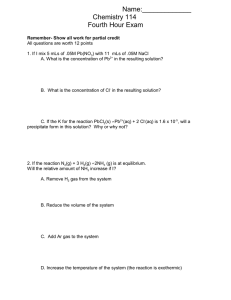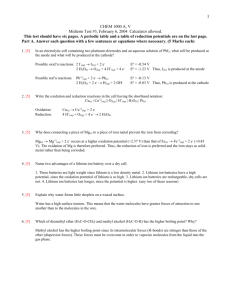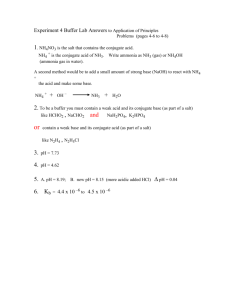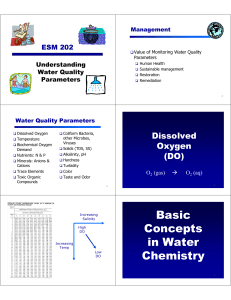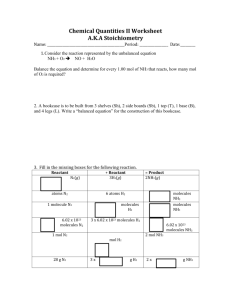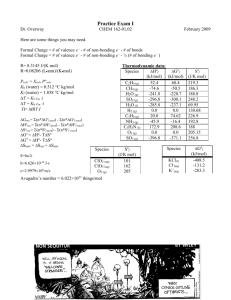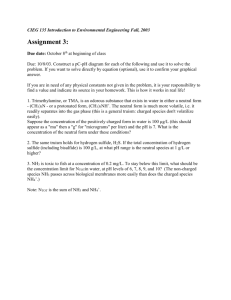Practice problems
advertisement
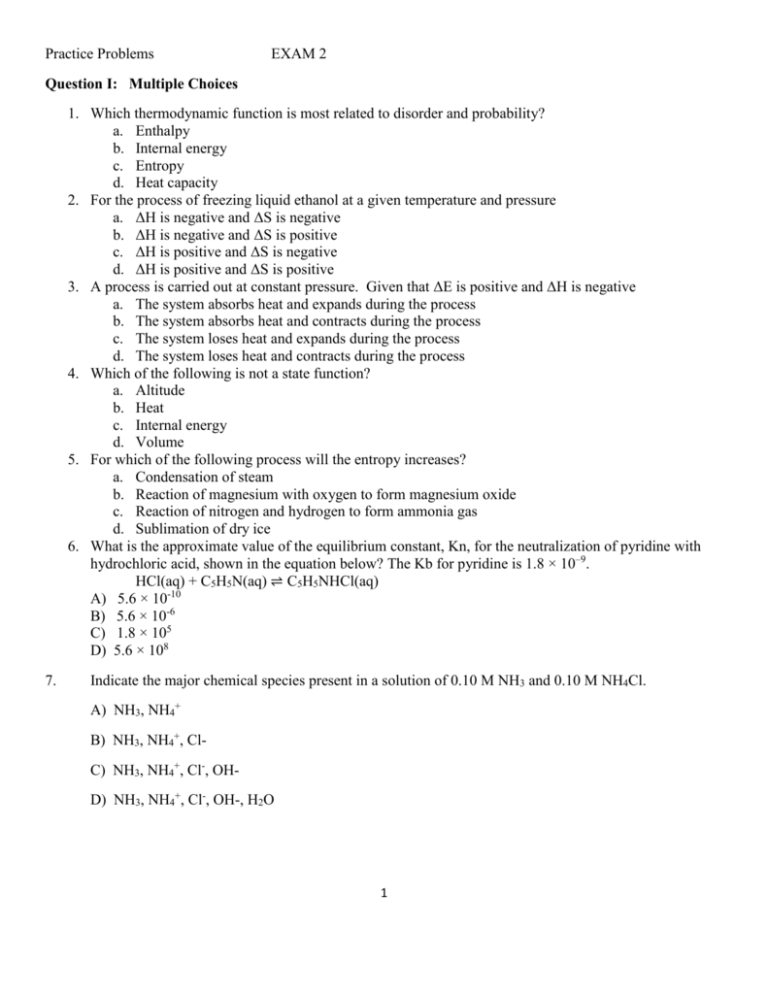
Practice Problems EXAM 2 Question I: Multiple Choices 1. Which thermodynamic function is most related to disorder and probability? a. Enthalpy b. Internal energy c. Entropy d. Heat capacity 2. For the process of freezing liquid ethanol at a given temperature and pressure a. ΔH is negative and ΔS is negative b. ΔH is negative and ΔS is positive c. ΔH is positive and ΔS is negative d. ΔH is positive and ΔS is positive 3. A process is carried out at constant pressure. Given that ΔE is positive and ΔH is negative a. The system absorbs heat and expands during the process b. The system absorbs heat and contracts during the process c. The system loses heat and expands during the process d. The system loses heat and contracts during the process 4. Which of the following is not a state function? a. Altitude b. Heat c. Internal energy d. Volume 5. For which of the following process will the entropy increases? a. Condensation of steam b. Reaction of magnesium with oxygen to form magnesium oxide c. Reaction of nitrogen and hydrogen to form ammonia gas d. Sublimation of dry ice 6. What is the approximate value of the equilibrium constant, Kn, for the neutralization of pyridine with hydrochloric acid, shown in the equation below? The Kb for pyridine is 1.8 × 10–9. HCl(aq) + C5H5N(aq) ⇌ C5H5NHCl(aq) A) 5.6 × 10-10 B) 5.6 × 10-6 C) 1.8 × 105 D) 5.6 × 108 7. Indicate the major chemical species present in a solution of 0.10 M NH3 and 0.10 M NH4Cl. A) NH3, NH4+ B) NH3, NH4+, ClC) NH3, NH4+, Cl-, OHD) NH3, NH4+, Cl-, OH-, H2O 1 Question II.Buffers 1) What is the pH of a 150.0 ml buffer of 0.10 M Na2HPO4/0.15 KH2PO4? Do not use Henderson Hassalbalch equation. (Hint: is this a monoprotic or polyprotic acid? Which Ka should be used in this problem?) What is the new pH of the buffer after adding 10.5 ml of 0.10M KOH. Assume the volume is additive). Neutralization reaction must be shown and you can use Henderson Hassalbalch to solve for the new pH 2 2) A solution is prepared by dissolving 0.535 g of NH4Cl in 250.0 ml of 0.080 M NH3. a. Calculate the pH of the above mixture. Kb = 1.8 x 10-5 b. Would the pH increases or decreases if the solution is disturbed by adding HBr? 3) Use Henderson Hassalbalch equation to calculate how much HCl must be added to a liter of buffer that is 1.5 M in acetic acid and 0.75M in sodium acetate to result in a buffer pH of 4.10? Ka = 1.8 x 10-5 3 Question III -thermochemistry 1. Given the following information P4(s) + 3 O2 (g) P4O (s) P4(s) + 5 O2 (g) P4O10 (s) ΔH = -1640.1 kJ/mol ΔH = -2940 kJ/mol What is the value of ΔHorxn for P4O6(s) + 2O2(g) P4O10(s) 2. Calculate the ΔGo for the reaction below and tell whether it is spontaneous or nonspontaneous under standard condition 25oC. Report your answer to one decimal place 2 S(g) + 3 O2(g) + 2 H2O(l) 2 H2SO4(l) At what temperature does the changeover occur? S(g) O2(g) H2O(l) H2SO4(l) ΔHof (kJ/mol) -277.2 0 -285.8 -814.0 ΔSo (J/mol K) 167.7 205.0 69.9 156.9 4 3. Use data from the Appendix, calculate the equilibrium constant Kp for the following reaction at 25oC 2 H2O(l) 2H2(g) + O2(g) 4. The first step in industrial recovery of zinc form the zinc sulfide ore is roasting, that is, the conversion of ZnS to ZnO by heating: Calculate the heat of reaction (in kJ) if 15.0g SO2 was collected. Was heat absorbed or released? 2ZnS(s) + 3O2(g) 2ZnO(s) + 2SO2(g) 5 ΔH = -879 kJ/mol




